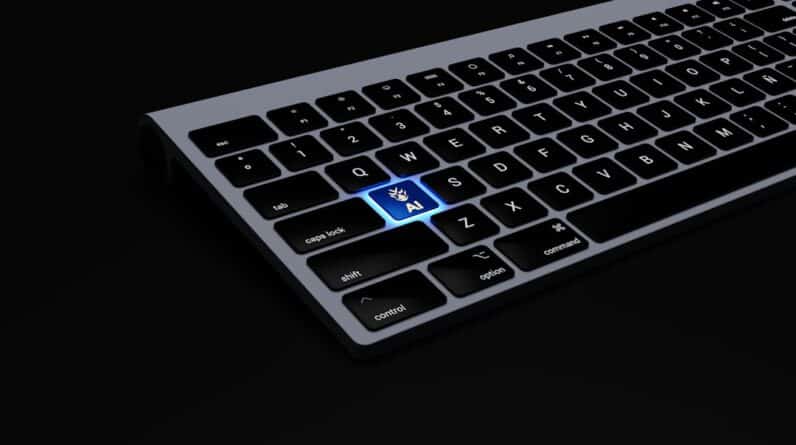As you delve into the fascinating intersection of artificial intelligence (AI) and neuroscience, you will discover a realm where technology meets the complexities of the human brain. The integration of AI into neuroscience is not merely a trend; it represents a paradigm shift in how researchers understand and interpret the intricate workings of the brain. With the ability to process vast amounts of data and identify patterns that may elude human researchers, AI is poised to enhance our understanding of neural mechanisms, cognitive functions, and various brain disorders.
The potential of AI in neuroscience is vast and multifaceted. From improving diagnostic accuracy to uncovering new therapeutic avenues, AI tools are becoming indispensable in modern neuroscience research. As you explore this field, you will find that AI is not just a tool for analysis but a partner in discovery, enabling scientists to push the boundaries of what is known about the brain.
This article will guide you through the various applications of AI in neuroscience, highlighting its transformative impact on brain imaging, understanding disorders, and drug development, while also addressing the ethical considerations that accompany these advancements.
Key Takeaways
- AI is revolutionizing neuroscience by providing new tools and techniques for understanding the brain and its disorders.
- AI plays a crucial role in brain imaging and analysis, helping researchers to process and interpret complex data more efficiently.
- AI applications are being used to gain a deeper understanding of brain disorders, leading to improved diagnosis and treatment options.
- Advancements in neural network modeling with AI are enhancing our understanding of brain function and behavior.
- AI is impacting drug discovery and development for brain-related conditions, offering new opportunities for more effective treatments.
The Role of AI in Brain Imaging and Analysis
In the realm of brain imaging, AI has emerged as a game-changer. Traditional methods of analyzing brain scans, such as MRI or CT images, often rely on manual interpretation by trained professionals. However, as you may know, this process can be time-consuming and subject to human error.
AI algorithms, particularly those based on deep learning, have demonstrated remarkable capabilities in automating image analysis. By training on large datasets, these algorithms can learn to identify subtle patterns and anomalies that may indicate underlying neurological conditions. As you consider the implications of AI in brain imaging, it becomes clear that these technologies can significantly enhance diagnostic precision.
For instance, AI systems can assist radiologists in detecting tumors, lesions, or other abnormalities with greater accuracy than traditional methods alone. Moreover, these systems can analyze images at a speed that far surpasses human capabilities, allowing for quicker diagnoses and timely interventions. This efficiency is particularly crucial in emergency situations where every second counts.
AI Applications in Understanding Brain Disorders
The application of AI extends beyond imaging; it plays a pivotal role in unraveling the complexities of various brain disorders. Conditions such as Alzheimer’s disease, schizophrenia, and autism spectrum disorders present significant challenges for researchers and clinicians alike. By leveraging machine learning algorithms, you can analyze vast datasets from genetic studies, neuroimaging, and clinical assessments to identify biomarkers and risk factors associated with these disorders.
For example, AI has been instrumental in predicting the onset of Alzheimer’s disease by analyzing patterns in brain scans and cognitive assessments. By identifying early indicators of cognitive decline, researchers can develop targeted interventions that may slow disease progression. Additionally, AI-driven analyses can help uncover the genetic underpinnings of psychiatric disorders, leading to more personalized treatment approaches.
As you explore these applications, you will see how AI not only enhances our understanding of brain disorders but also paves the way for innovative therapeutic strategies.
Advancements in Neural Network Modeling with AI
Neural network modeling has seen significant advancements due to the integration of AI technologies. These models aim to simulate the complex interactions within neural circuits, providing insights into how information is processed in the brain. As you engage with this topic, you will find that AI-driven neural networks can replicate certain aspects of human cognition, offering a unique perspective on brain function.
One notable advancement is the development of generative models that can simulate neural activity patterns based on input data. These models allow researchers to test hypotheses about brain function and explore how different variables influence neural responses. Furthermore, by utilizing reinforcement learning techniques, AI can mimic decision-making processes observed in humans, shedding light on cognitive functions such as learning and memory.
As you delve deeper into this area, you will appreciate how these advancements not only enhance our understanding of neural dynamics but also contribute to the development of more sophisticated AI systems.
AI’s Impact on Drug Discovery and Development for Brain-related Conditions
The drug discovery process has long been a labor-intensive and costly endeavor, particularly for brain-related conditions where traditional methods often yield limited success. However, with the advent of AI technologies, this landscape is changing rapidly. You will find that AI can streamline various stages of drug development, from identifying potential drug candidates to predicting their efficacy and safety profiles.
AI algorithms can analyze vast chemical databases to identify compounds that may interact with specific biological targets associated with neurological disorders. By employing predictive modeling techniques, researchers can prioritize candidates for further testing based on their likelihood of success. This not only accelerates the drug discovery process but also reduces costs significantly.
Moreover, AI can assist in optimizing clinical trial designs by identifying suitable patient populations and predicting outcomes based on historical data. As you explore these advancements, it becomes evident that AI is revolutionizing how drugs are developed for brain-related conditions.
Ethical Considerations and Challenges of AI in Neuroscience
While the integration of AI into neuroscience holds immense promise, it also raises important ethical considerations that cannot be overlooked. As you navigate this complex landscape, you will encounter questions regarding data privacy, informed consent, and the potential for bias in AI algorithms. The use of sensitive health data for training AI models necessitates stringent safeguards to protect patient confidentiality and ensure ethical research practices.
Moreover, there is a growing concern about the potential for bias in AI systems trained on non-representative datasets. If these algorithms are not carefully designed and validated, they may inadvertently perpetuate existing disparities in healthcare outcomes. As you reflect on these challenges, it becomes clear that addressing ethical considerations is paramount to ensuring that AI technologies are used responsibly and equitably in neuroscience research.
The Future of AI in Brain Research
Looking ahead, the future of AI in brain research appears bright and full of potential. As technology continues to evolve, you can expect even more sophisticated algorithms capable of tackling increasingly complex questions about brain function and disorders. The integration of multi-modal data—combining genetic, imaging, and behavioral information—will likely enhance our understanding of the brain’s intricacies.
Furthermore, as collaboration between neuroscientists and data scientists becomes more prevalent, interdisciplinary approaches will drive innovation in research methodologies. You may witness the emergence of new tools that facilitate real-time data analysis and visualization, enabling researchers to make discoveries at an unprecedented pace. The future holds exciting possibilities for harnessing AI’s capabilities to unlock the mysteries of the brain and improve patient outcomes.
The Potential of AI to Revolutionize Neuroscience
In conclusion, your exploration of AI’s role in neuroscience reveals a transformative force that has the potential to revolutionize our understanding of the brain. From enhancing diagnostic accuracy through advanced imaging techniques to unraveling the complexities of brain disorders and streamlining drug discovery processes, AI is reshaping the landscape of neuroscience research. However, as you reflect on these advancements, it is essential to remain vigilant about the ethical considerations that accompany such powerful technologies.
As you look toward the future, it is clear that the collaboration between neuroscience and artificial intelligence will continue to yield groundbreaking insights and innovations. The potential for AI to enhance our understanding of the brain is immense, offering hope for improved treatments and interventions for those affected by neurological conditions. Embracing this technological evolution while addressing its challenges will be crucial as we strive to unlock the full potential of neuroscience in the years to come.
A related article to AI in Neuroscience: the Future of BrAIn Research is “Preserving Privacy in an AI-Driven World: Challenges and Solutions.” This article discusses the importance of protecting personal data in an increasingly AI-driven world. To read more about this topic, visit Preserving Privacy in an AI-Driven World: Challenges and Solutions.
FAQs
What is AI in neuroscience?
AI in neuroscience refers to the use of artificial intelligence (AI) technologies in the field of neuroscience to analyze, interpret, and understand complex brain-related data. This includes the use of machine learning algorithms, deep learning, and other AI techniques to study brain function, structure, and behavior.
How is AI being used in neuroscience research?
AI is being used in neuroscience research to analyze large datasets of brain imaging, such as MRI and fMRI scans, to identify patterns and correlations that may not be apparent to human researchers. AI is also being used to model and simulate neural networks, predict brain activity, and develop new treatments for neurological disorders.
What are the potential benefits of using AI in neuroscience research?
The use of AI in neuroscience research has the potential to accelerate the pace of discovery and innovation in understanding the brain. AI can help researchers uncover new insights into brain function, identify biomarkers for neurological diseases, and develop more effective treatments for conditions such as Alzheimer’s disease, Parkinson’s disease, and depression.
What are some challenges of using AI in neuroscience research?
Challenges of using AI in neuroscience research include the need for large, high-quality datasets for training AI algorithms, the interpretability of AI-generated results, and ethical considerations related to privacy and data security. Additionally, there is a need for collaboration between AI experts and neuroscientists to ensure that AI tools are effectively applied to address key research questions in neuroscience.
What is the future of AI in neuroscience research?
The future of AI in neuroscience research holds great promise for advancing our understanding of the brain and developing new treatments for neurological disorders. As AI technologies continue to evolve, they are expected to play an increasingly important role in analyzing complex brain data, uncovering new insights, and ultimately improving brain health and well-being.






